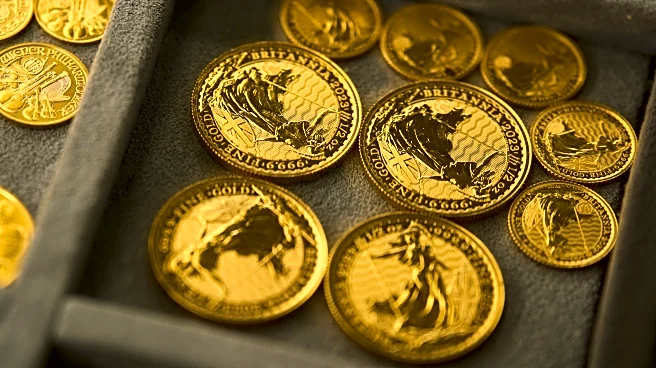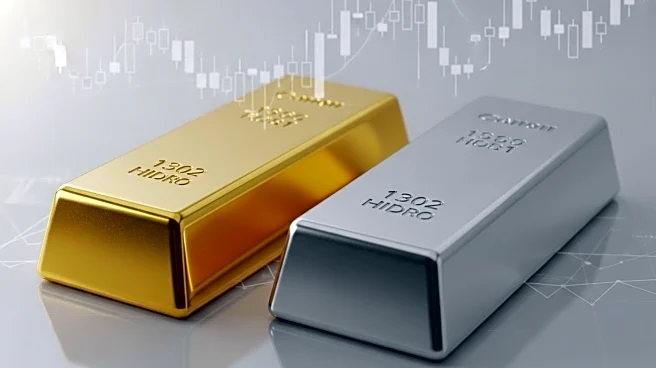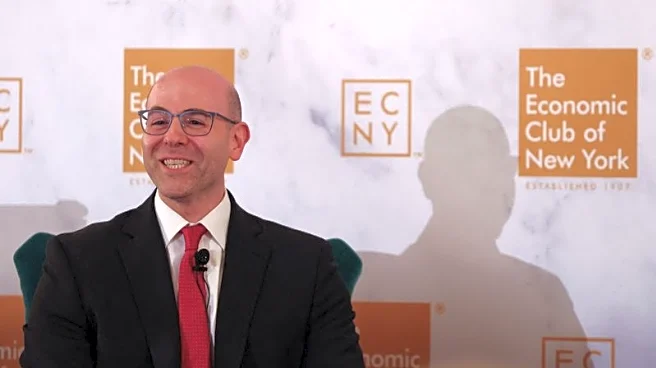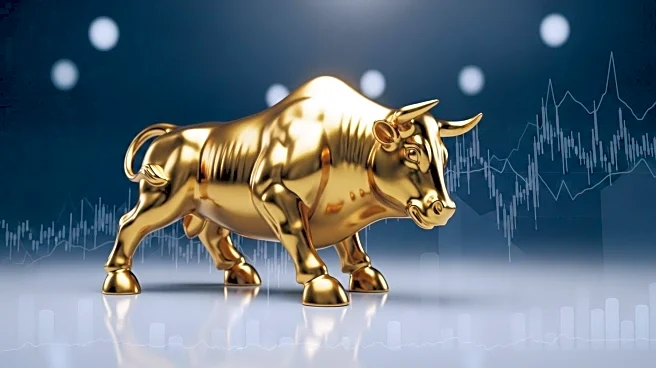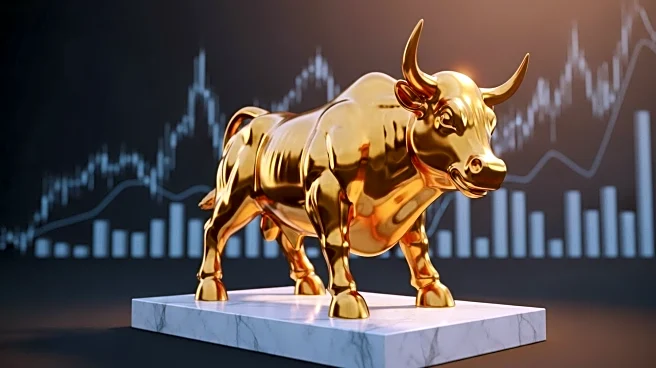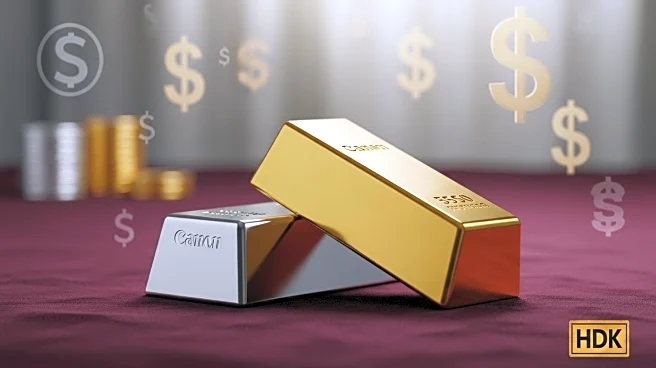What's Happening?
Gold futures have reached a historic high, surpassing $4,000 per troy ounce for the first time. This surge is attributed to investors seeking safe havens amid ongoing economic uncertainties, including the U.S. government shutdown. The price of gold in New York hit this milestone on Tuesday morning, following a previous close at $3,960.60 per troy ounce. The increase in gold prices is part of a broader trend, with gold futures rising approximately 50% since the start of 2025. Silver has also seen significant gains, with futures up about 60% year-to-date. The economic instability, partly fueled by President Trump's trade policies and the current government shutdown, has led to increased demand for precious metals. The shutdown has resulted in delayed economic data and affected federal employees, adding to the market's anxiety.
Why It's Important?
The rise in gold prices reflects broader economic concerns, including the impact of trade wars and the government shutdown on the U.S. economy. As tariffs increase costs and strain businesses, the job market has weakened, and inflation has risen, leading to consumer pessimism. The Federal Reserve's recent interest rate cuts have also made gold more attractive compared to interest-bearing investments. This trend highlights the role of gold as a 'safe haven' investment during times of economic uncertainty. However, the volatility of gold prices and potential market scams pose risks to investors. The increased demand for gold also raises environmental and health concerns, particularly related to mercury use in illegal gold mining.
What's Next?
The ongoing government shutdown and economic policies will likely continue to influence gold prices. Investors may keep turning to gold as a hedge against inflation and economic instability. The Federal Reserve's future interest rate decisions will also play a crucial role in shaping investment strategies. Additionally, the environmental impact of increased gold mining, particularly the use of mercury, may prompt regulatory scrutiny and international cooperation to address these issues.
Beyond the Headlines
The surge in gold prices underscores the complex interplay between economic policy, market behavior, and environmental consequences. The reliance on gold as a financial safeguard highlights the need for diversified investment strategies. Moreover, the environmental and health risks associated with gold mining, especially in developing countries, call for global attention and sustainable practices. This situation illustrates the broader implications of economic decisions on both local and global scales.

